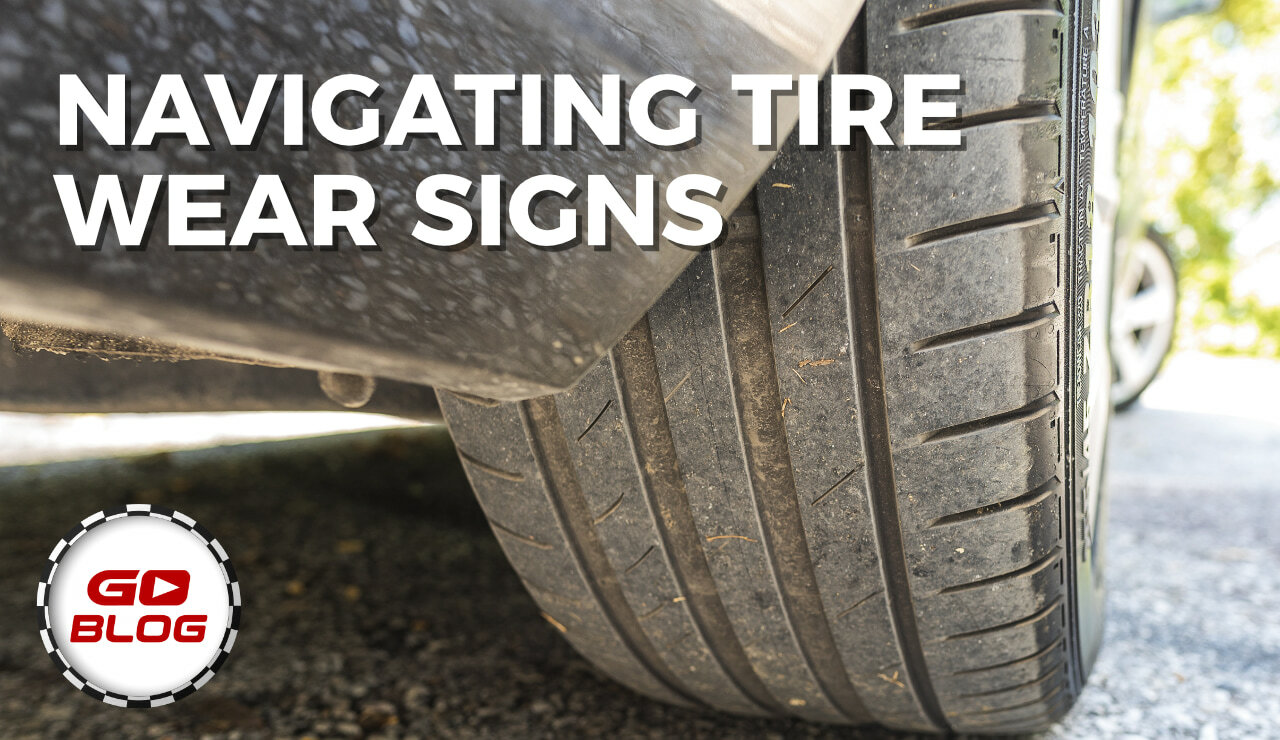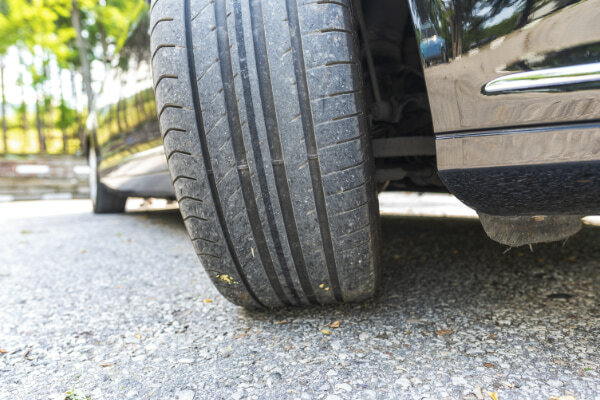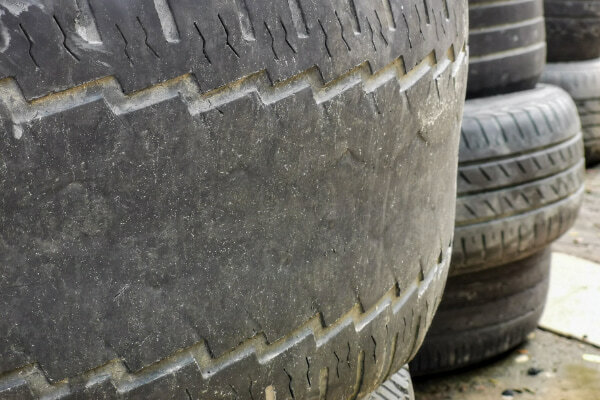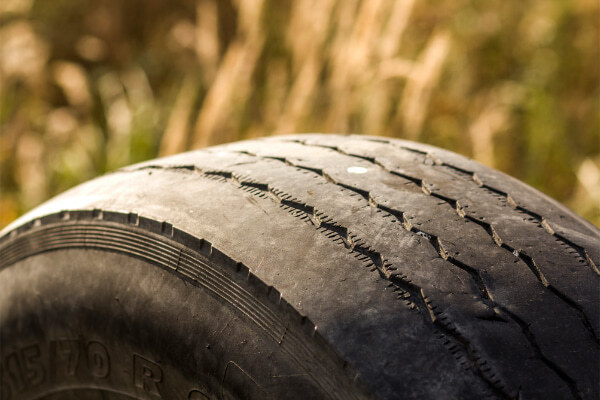Decoding the Signs: Understanding Tire Tread Wear Patterns
Posted by WheelSetGo on 7th Feb 2024

Decoding the Signs: Understanding Tire Tread Wear Patterns
Your vehicle's tires are the only point of contact with the road, making their condition critical to your safety, fuel efficiency, and the vehicle's overall performance. Regular tire inspections can help identify wear patterns that indicate deeper issues with your car. This post will guide you through understanding what different tire tread wear patterns mean and how you can address them.
The Importance of Tire Tread
Tire tread provides the necessary traction to stop, start, and navigate your vehicle safely, especially in adverse conditions. Over time, tread wears down, which can lead to decreased performance and safety. However, how the tread wears can tell you a lot about the health of your vehicle.
Understanding Tire Tread Wear Patterns
Even Wear
Description: Tread wear that is uniform across the tire's surface.
Cause: This is normal wear for tires and indicates they are properly inflated and the wheels are well-aligned.
Action: Continue regular maintenance and monitor for changes in wear patterns.

Center Wear
Description: The tread is noticeably more worn in the center of the tire than on the edges.
Cause: Typically caused by over-inflation, which causes the tire's middle part to bear most of the vehicle's weight.
Action: Adjust tire pressure to the manufacturer's recommended levels and check for changes in wear patterns.

Edge Wear
Description: The edges of the tire are more worn than the center.
Cause: Usually results from under-inflation. When tires don't have enough air, the outer edges work harder to maintain contact with the road.
Action: Inflate tires to the proper pressure as specified by the vehicle's manufacturer.
Cupping or Scalloping
Description: Diagonal scallops or dips appearing around the tire's surface.
Cause: Often caused by suspension issues, such as worn shock absorbers or misaligned wheels, leading to uneven contact with the road.
Action: Have the suspension system checked and repaired by a professional.
One-Sided Wear
Description: One side of the tire is more worn than the other.
Cause: This pattern can indicate misalignment with a particular slant, causing the tire to drag slightly sideways.
Action: An alignment check is crucial, as well as inspection of suspension components for wear or damage.

Patchy Wear
Description: Wear that appears in patches or spots around the tire.
Cause: This pattern often results from issues with wheel balance.
Action: Have tires balanced and rotated. Regularly check for and correct any alignment issues.
Preventing Irregular Wear
Regular Maintenance: Alignments, tire rotations, and balancing should be part of your vehicle's routine maintenance.
Proper Inflation: Check tire pressure monthly, including the spare, to ensure tires are inflated to the manufacturer's recommended levels.
Suspension Check: Periodically inspect the suspension system for worn or damaged parts, as these can directly impact tire wear.
Final Thoughts
Understanding tire tread wear patterns is crucial for maintaining your vehicle's health and ensuring your safety on the road. Regular checks can help prevent minor issues from becoming major problems, ultimately saving you time and money in the long run. If you notice any irregular wear patterns, it's important to address them promptly to keep your vehicle running smoothly and safely.
Don't let tire wear catch you off guard. If you're unsure about the condition of your tires or if you've noticed some of the wear patterns mentioned in our guide, we're here to help. Give us a call at 320-247-6160, and let our experts provide you with the advice and services you need to ensure your tires are in top condition. Remember, taking care of your tires means taking care of your safety on the road. Reach out today!
Frequently Asked Questions (FAQs) on Tire Tread Wear
- How often should I check my tire pressure?
It's recommended to check your tire pressure at least once a month and before long trips. Proper inflation is key to preventing uneven tire wear. - What is the minimum tread depth for safe driving?
The legal minimum tread depth in most states is 2/32 of an inch. However, for better safety, especially in wet conditions, many experts recommend replacing tires when they reach 4/32 of an inch of remaining tread. - Can rotating my tires extend their life?
Yes, regular tire rotation can help achieve uniform wear and extend the overall life of your tires. It's typically recommended every 5,000 to 7,000 miles or as specified by your vehicle's manufacturer. - How does tire alignment affect tire wear?
Proper alignment ensures that tires wear evenly and extend their lifespan. Misalignment can lead to uneven wear patterns, such as one-sided wear or feathering, and can shorten a tire's usable life. - What causes tires to wear out quickly?
Several factors can cause rapid tire wear, including over or under-inflation, lack of rotation, poor alignment, aggressive driving habits, and worn suspension parts. - Is it okay to replace just one tire?
Replacing just one tire can lead to uneven wear and affect handling and performance, especially if the other tires are significantly worn. It's generally recommended to replace tires in pairs (both fronts or both rears) or all four at a time for the best balance and performance. - How do I know if my tires are properly balanced?
Symptoms of unbalanced tires include vibration in the steering wheel, seat, or floorboard at certain speeds. Getting your tires balanced can eliminate these vibrations and promote even tire wear. - Can weather affect tire wear?
Yes, extreme temperatures and direct sunlight can accelerate tire wear by breaking down the tire compounds more quickly. Additionally, driving conditions (like more frequent driving on hot roads) can also influence wear rates. - When should I get a wheel alignment?
Besides regular checks, you should consider getting an alignment if you notice uneven tire wear, your vehicle pulls to one side, or after hitting a significant pothole or curb. - Do all tires wear at the same rate?
No, tires on the front axle of a vehicle often wear faster than those on the rear due to steering and braking forces. This is one reason why regular rotation is important for achieving even wear across all tires.
